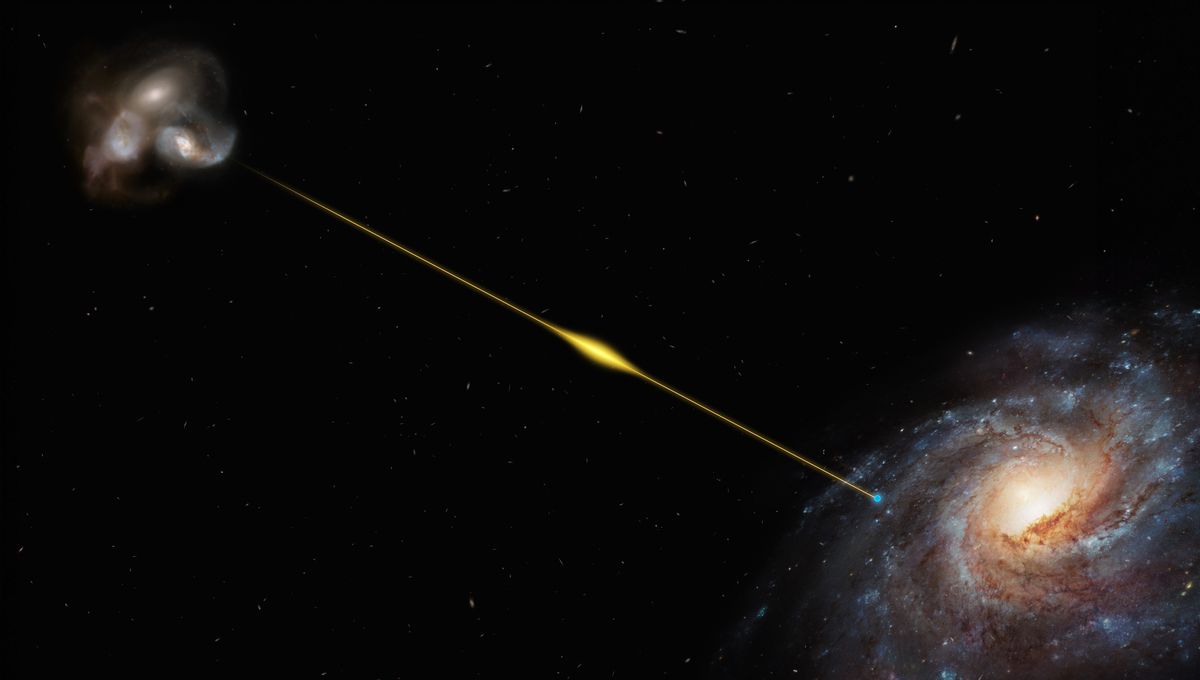
Astronomers have announced the discovery of a fast radio burst (FRB) from a galaxy 8 billion light-years away. The event, called FRB 20220610A, is the most ancient FRB ever recorded and it is also among the most energetic, exceeding the theoretical maximum for the population by a factor of 3.5. It truly was a record-breaker.
We still do not have a complete picture of what FRBs actually are. Some are one-offs. Some repeat themselves. The repeating ones appear to come from extremely magnetic neutron stars orbiting other objects, periodically interacting with plasma around them, launching enormous bursts of energy in radio waves in a tiny interval of time.
FRB 20220610A was detected by the ASKAP radio telescope in Wajarri Yamaji Country, Australia. In a few milliseconds, its source released the equivalent of what the Sun produces in 30 years. And the signal spread through the universe, traveling billions of years to reach Earth.
“Using ASKAP’s array of dishes, we were able to determine precisely where the burst came from,” lead author Dr Stuart Ryder, from Macquarie University, said in a statement. “Then we used the European Southern Observatory (ESO) Very Large Telescope (VLT) in Chile to search for the source galaxy, finding it to be older and further away than any other FRB source found to date, and likely within a small group of merging galaxies.”
The record-breaking event is obviously exciting in its own right, but the fact that the research team was able to track it back to its host galaxy adds so much to the discovery. So far, only 50 FRBs have been pinpointed to their host galaxy. Having more will help astronomers better understand them. They can be also used to look for the “missing matter” in the universe.
“If we count up the amount of normal matter in the Universe – the atoms that we are all made of – we find that more than half of what should be there today is missing,” said Associate Professor Ryan Shannon.
“We think that the missing matter is hiding in the space between galaxies, but it may just be so hot and diffuse that it’s impossible to see using normal techniques. Fast radio bursts sense this ionized material. Even in space that is nearly perfectly empty they can ‘see’ all the electrons, and that allows us to measure how much stuff is between the galaxies.”
The existence of FRBs so far away in the Universe such as FRB 20220610A suggests that studying a large population of them would give astronomers the ability to study the missing matter as well. When new observatories like the Square Kilometer Array come online, many more of these events could be discovered.
“While we still don’t know what causes these massive bursts of energy, the paper confirms that fast radio bursts are common events in the cosmos and that we will be able to use them to detect matter between galaxies, and better understand the structure of the Universe,” explained Associate Professor Shannon.
FRB 20220610A comes from a galaxy involved in a cosmic collision with two others. A triple merger from a time when the universe was a lot more active.
A paper discussing the results is published in the journal Science.
Source Link: Incredibly Energetic Fast Radio Burst Is Most Distant Seen Yet